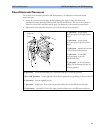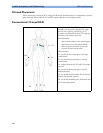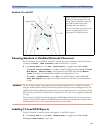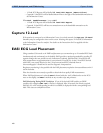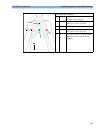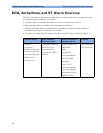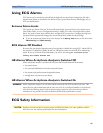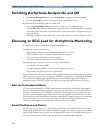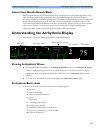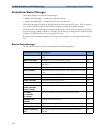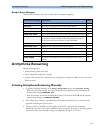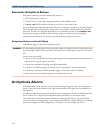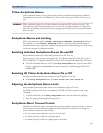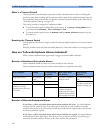
About Arrhythmia Monitoring 6 ECG, Arrhythmia, and ST Monitoring
107
About Arrhythmia Monitoring
Arrhythmia analysis provides information on your patient’s condition, including heart rate, PVC rate,
rhythm, and ectopics. The monitor uses the user-selected primary and secondary ECG leads for single-
lead or multi-lead arrhythmia analysis. During arrhythmia analysis, the monitor continuously
• optimizes ECG signal quality. This is important for arrhythmia analysis. The monitor continuously
filters the ECG signal to remove baseline wander, muscle artifact, and signal irregularities. Also, if
the Patient Paced status is set to Yes, pace pulses are filtered out to avoid processing them as QRS
beats.
• detects beats, for example, QRS complexes, identifying them for further analysis.
• measures signal features such as R-wave height, width, and timing.
• creates beat templates, and classifies and labels beats to aid in rhythm analysis and alarm detection.
• examines the ECG signal for ventricular fibrillation, asystole, and noise.
Arrhythmia Options
Your monitor has either the basic or the enhanced arrhythmia option. Both options provide rhythm
and ectopic status messages and beat labelling. The number of rhythms being classified, events being
detected, and alarms generated differs according to the option. The alarms available with the different
options are listed in the section “ECG, Arrhythmia, and ST Alarm Overview” on page 104, the rhythm
and ectopic messages detected are listed in “Arrhythmia Status Messages” on page 110.
Where Can I Find More Information?
See the Application Notes on ST and Arrhythmia supplied on your documentation CD-Rom for
detailed information on the arrhythmia algorithm and its clinical application.



